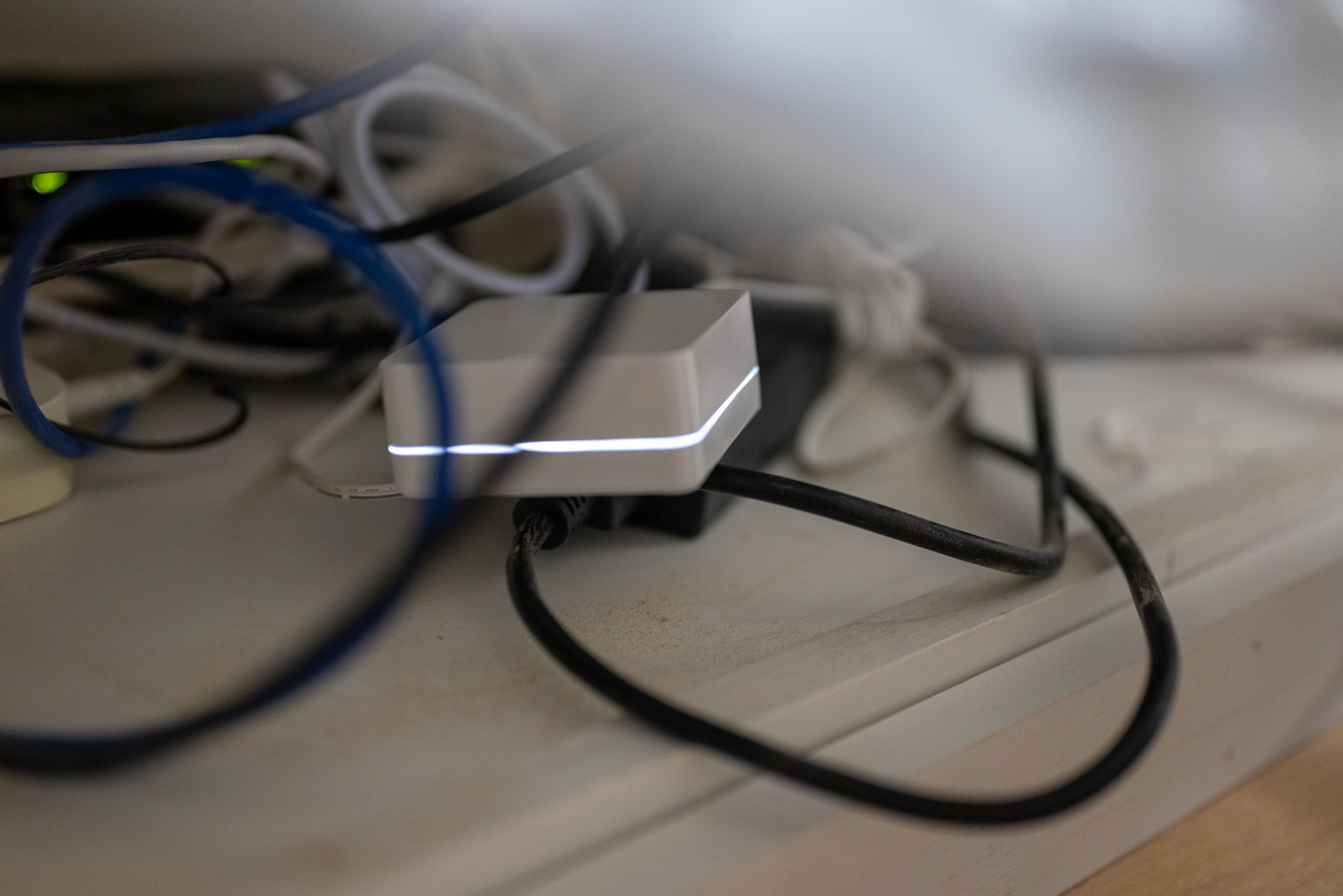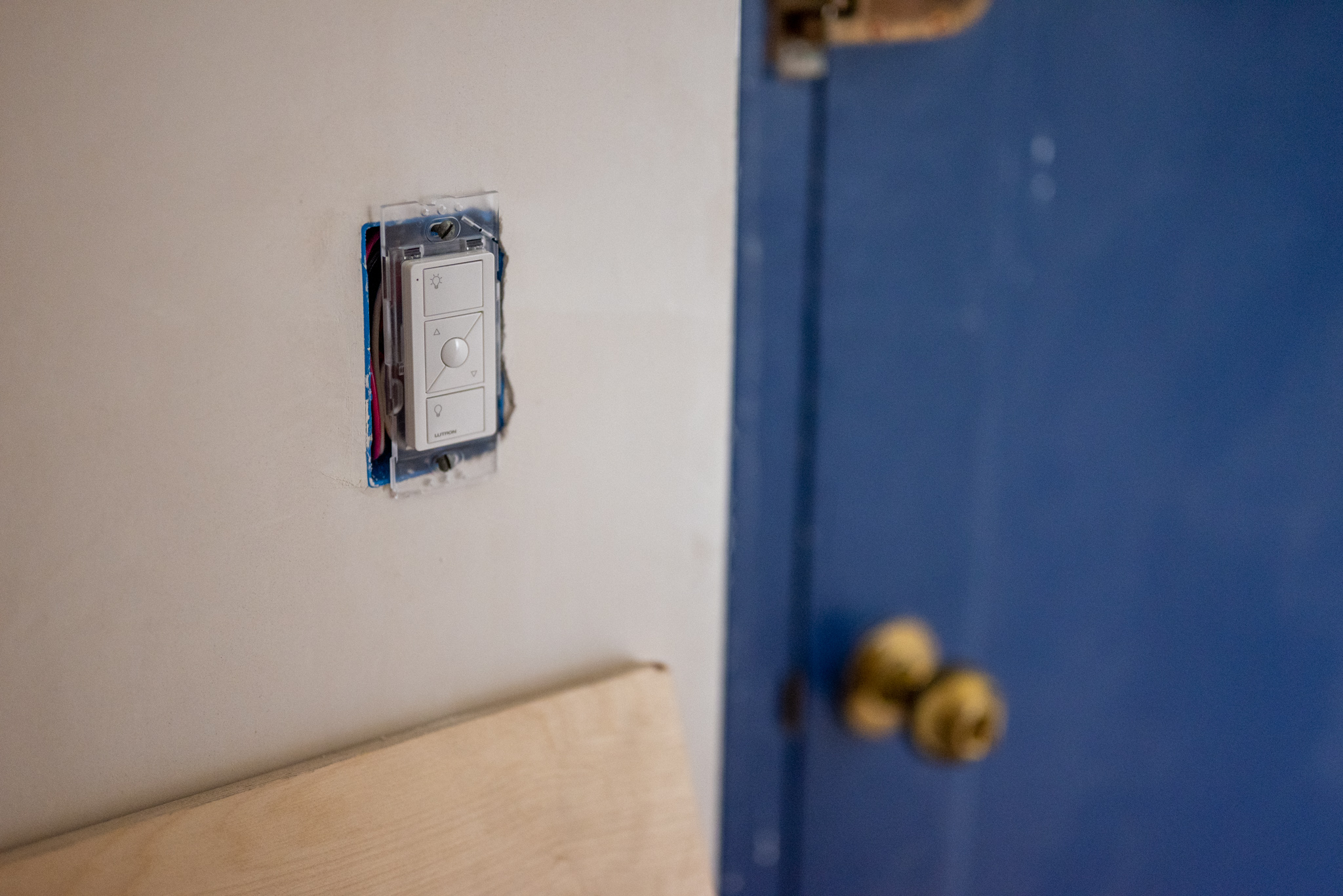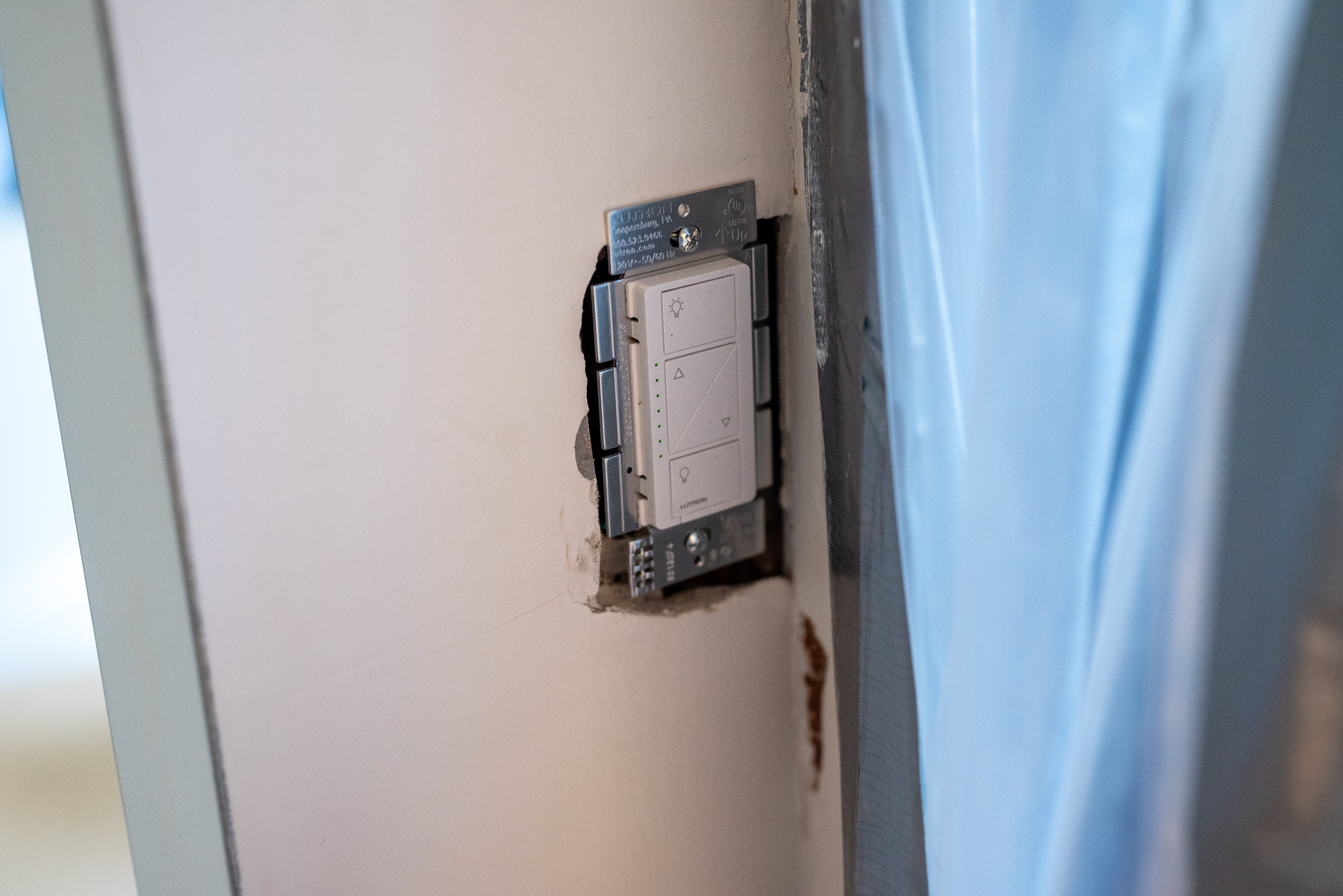Caséta Interlude

As the days get shorter and the project remains uncompleted, it’s gotten more annoying that there’s no way to turn on a light when I get home without stumbling in the dark. Last week, I decided to do something about it by setting up a Lutron Caséta system.
Lutron’s Caséta system brings ideas that used to be the preserve of very expensive custom installations into the mass market. The Caséta dimmers and switches operate existing lighting circuits. They also connect to a network bridge that allows the lights to be automated in fun and interesting ways.
You can bridge the Caséta system into Apple’s HomeKit universe (or use Lutron’s iOS application) to control the lights and program scenes with your phone. Or you can use system accessories like Lutron’s Pico remote to drop a switch anywhere (they operate over a proprietary wireless band) to control one or multiple lighting circuits.
It’s this last part that I took advantage of to deal with my “getting home and it’s pitch black” problem.
I replaced a few of the switches in the unaffected parts of my apartment with Caséta dimmers. Then I set up a Pico remote to operate those circuits. The remote is cleverly the same size as a decorator-style switch, and Lutron provides a holder to retrofit it into a standard switch box.
Eventually there will be a switch next to my front door that controls a lighting circuit. For now, I’ve slipped in a Pico remote to turn on other lights to avoid tripping in the dark. It’s still not exactly great, but it’s much improved.

As a system, I’m impressed.
The Caséta “universe” is incredibly reliable. Ridiculous as it sounds, this is a big deal. I’ve used the Philips Hue system before, and, nice as it is, the fact the controls fail one out of even a thousand times is a problem.
I also really appreciate that the system doesn’t solely rely on special controls or a piece of smartphone software. You can use the system as normal. The normal switches in the normal place work as normal. Normal people can operate the lights without special instructions.

The only major downside is the system’s cost. Each of the switches runs about $60, and the cost doesn’t go down if you instead use a simple on-off switch rather than a dimmer. Plus the cost of the remotes (maddeningly, $20 for the white ones and $40 for the black ones) and the network bridge (about $100).
In any case, I’ve had to use dimmers on all my old lighting circuits because the simple on-off switches require a neutral wire. That wasn’t how they ran lighting circuits in the 1950s. If I’m honest, having dimmers everywhere is kind of nice and kind of fun.
On a more “this would be nice” level, there are two small paper cut issues I’d love to have them address.
First, I really wish it were possible to change the way the lights turn on and off. I’m sure most people think the subtle fade up and fade down make the system feel more “premium.” There are places it feels weird. Like in the bathroom. It’s nice to have the ability to dim the lights. I’d really rather than simply (or more quickly) turn on and off.
Second, it would be nice if Lutron were more open to other systems. The Pico remote is a genius concept. I’d love to be able to control devices outside Lutron’s switches or their universe of hand-selected partners.